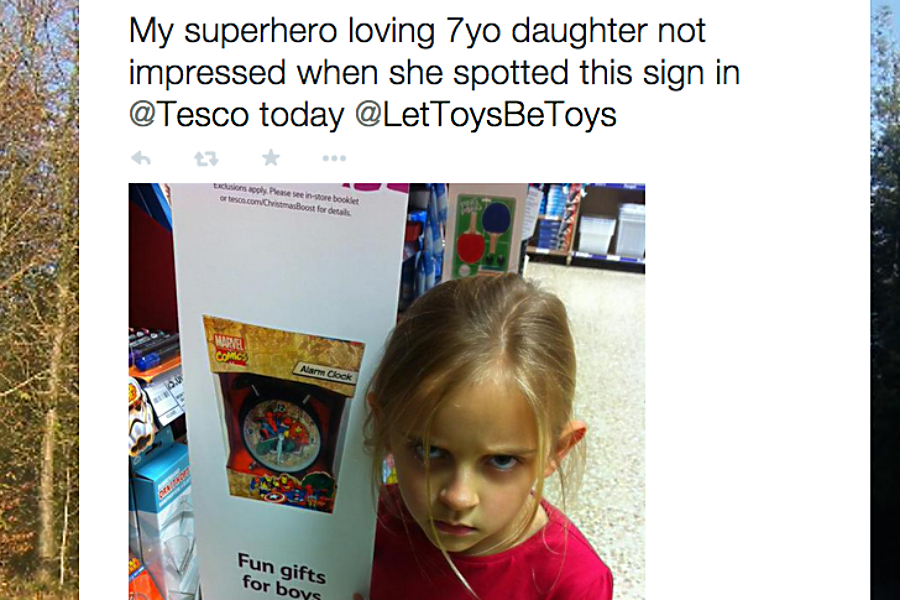How a 7-year-old girl's trip to Tesco helped 'Let Toys Be Toys'
Loading...
A family’s trip to Tesco, a U.K.-based grocery and general merchandise store, has led to promised change.
In a blog post, Karen Cole, of Shaftesbury, England, writes that she and her 7-year-old daughter, Maggie, went to Tesco’s Tower Park store and Maggie spotted a sign indicating that the toys present were “fun gifts for boys.”
When Ms. Cole tweeted a photo of her daughter to the chain and to the “Let Toys Be Toys” campaign, which aims to stop retailers from dividing toys by gender, the unexpected happened — after endorsements from the “Let Toys Be Toys” campaign, she heard back.
The store then promised to take down the sign from all stores, Buzzfeed reported.
The response from Tesco is the latest success for the “Let Toys Be Toys” campaign, led by a group of British parents. In fall 2013, the campaign persuaded British Toys R Us stores to take out explicit references to gender in their stores.
In the U.S., similar toy campaigns have focused largely on products marketed to girls, including organizations such as the Brave Girls Alliance, A Mighty Girl, and Princess-Free Zone.
A Mighty Girl started a Change.org campaign encouraging Toys R Us stores to remove “boy” and “girl” headings from their catalogs, among other demands. The campaign has attracted 4,058 supporters as of press time.
And last year’s “Princess Machine” video went viral. The video showed young girls who set up a Rube Goldberg-esque machine to roll balls around a family’s living room and swing buckets on strings, eventually pushing a button to turn off a television program showing three girls, dressed in pink, watching a tea party on television.
When Maggie spotted the gender-biased Tesco sign, it reminded her mother of a conversation the family had the year prior, she writes on her blog.
In 2013, Tesco initially defended marketing a chemistry set to boys, saying on Twitter that “toy signage is currently based on research and how our customers tell us they like to shop in our stores,” The Independent reported. Soon after, Tesco reversed the decision and reviewed how toys are labeled online.
Cole and Maggie found a wave of support after Cole’s initial tweet. Users retweeted Maggie’s stern face about 10,475 times, “favoriting” the post more than 11,500 times.
Signs and labels noting the gender for specific toys hurt children, Cole says, because “children are being teased and bullied for not conforming to the perceived gender norms.”






